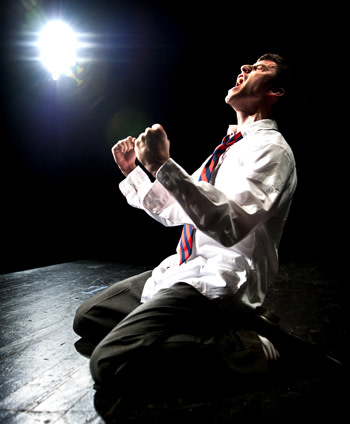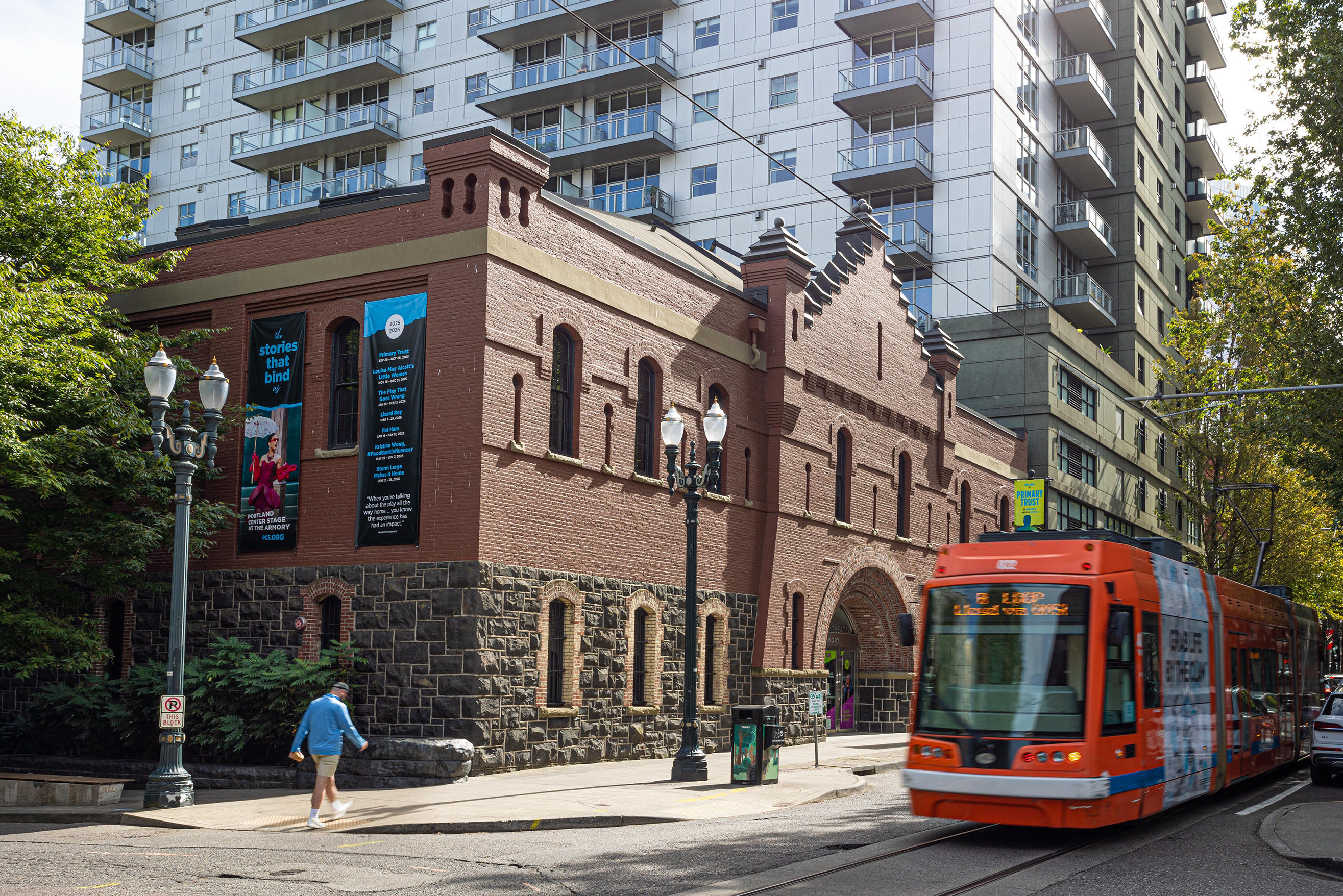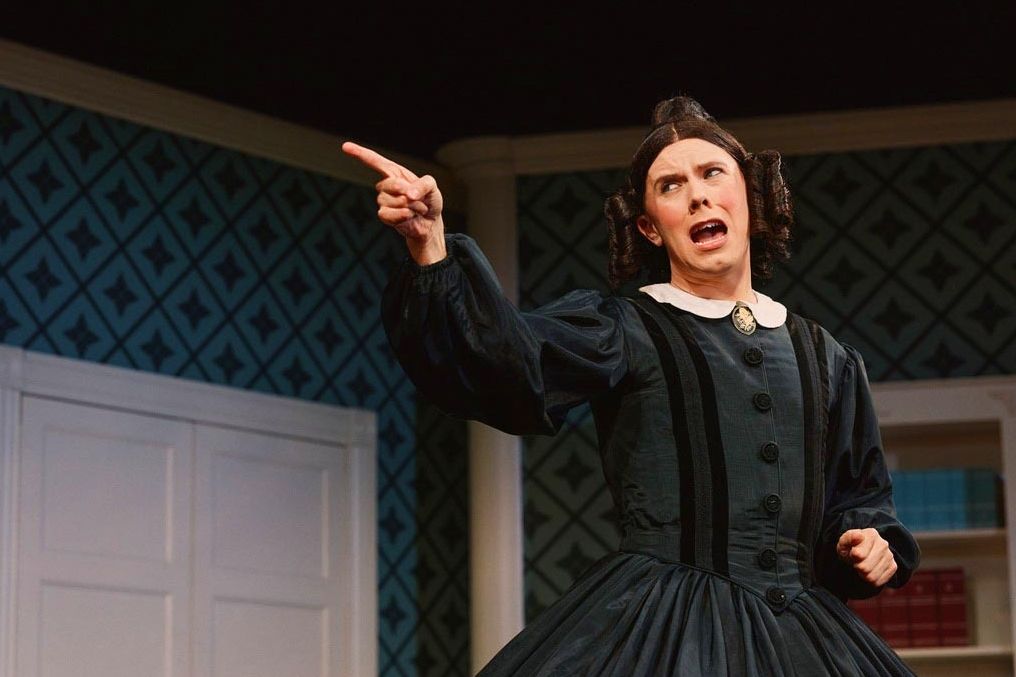Review: Shakespeare’s R&J

Sean Powell gives a stirring performance as the lovestruck…Mercutio? Photo by Casey Campbell
I’m not a big fan of Romeo and Juliet. Like most, I read it in high school and have seen more traditional productions and adaptations than I care to remember: Romeo and Juliet: The Musical; Romeo and Juliet Take Miami, starring Leo and Claire; Romeo and Juliet: Inspired by Gwyneth Paltrow’s Breasts; although thankfully not Gnomeo and Juliet—at least, not yet. For me, it comes down to the fact that it’s near impossible for the greatest love story ever told to rise far enough above its own overdone cliché to strike contemporary audiences with the power it no doubt once possessed.
So I don’t say this lightly: Google map Hillsboro’s Venetian Theatre, get in your car, and go see Bag&Baggage’s production of Shakespeare’s R&J before it’s over next weekend. Like no adaptation I’ve seen, it re-instills the raw, dangerous, thrilling, and emotional poignancy that the story lost somewhere between Gounod’s opera and Dire Straits’ “A lovestruck Romeo…”
The premise seems simple: four Catholic schoolboys discover a banned copy of R&J and proceed to act it out, each playing a number of roles. But playwright Joe Calarco, despite adding almost no new dialogue (the boys’ daily routine is established through simple choreographed pantomime), creates a nuanced and heart-wrenching story beneath the story.
At first, the boys attack the roles with the overacting zeal of, well, schoolboys, tossing their one copy back and forth, prancing their way through the female roles, and showing off for each other’s amusement. But quickly the story intrudes into their unexamined identities and relationships and begins to sweep them away. As Romeo and Juliet fall in love in the play, the boys playing their parts (Samuel Benedict and Phillip Berns) seem to fall, too, kissing for the first time with all the trepidation of two star-crossed young virgins at the start of their sexual awakening, lingering on each other’s lips well into the scene change, despite the shouts of “thou shalt not!” from the other two boys, who reel from the taboo.
Although an all male cast could simply be a return to the way theater was performed during Shakespeare’s time, Calarco’s play within a play introduces a homoerotic tension that creates a new subtext to everything said. In effect, two plays unfold at once, and yet the duality paradoxically seems closer to the beating heart of Shakespeare’s original than a straightforward contemporary production. Homosexuality, particularly in a religious all boy setting, creates a forbidden love that resonates with modern audiences in a way that forbidden love between warring families does not. Same sex couples today come far closer to the threat Romeo and Juliet faced of being rejected and even exiled by their families than any opposite sex couple.
Calarco doesn’t stop there, though. From the start, the boy playing both Mercutio and the Friar expresses a latent attraction to the boy playing Romeo, but then is forced to stand by and watch Romeo fall for Juliet (complex, silent drama unfolds between the boys even as they watch the scenes they’re not in). Performed with elastic, electric charisma by Sean Powell, he grows increasingly lovelorn and unhinged, and almost every line he says takes on an uncannily perfect double meaning that adds new charge. When Mercutio talks about how quickly Romeo deserted his first love, Rosaline, it’s like he’s talking about his own abandonment. And in his gripping death scene, as he casts a plague on the houses Montague and Capulet, he condemns too the boys playing Romeo and Juliet.
Meanwhile, the fourth boy, played by Ian Kane, is the sole homophobic holdout. He stands in for much of society then and now, watching with disgust as passions unfold.
Ultimately, none of the boys have the ability to deal with the dangerous intensity of the feelings the play awakens—lust, sensuality, disgust, love, hate. The play becomes so real by the end that it leaves them disheveled, sweating, and deeply changed, and the audience along with it. It’s the simple idea that a play can change a life, like Romeo and Juliet should do.
The stage is spare, but the actors fill it with such energy and zest, particularly during the grandly choreographed fight scenes, that it doesn’t for a minute feel empty. Though young, they all feel like seasoned Shakespearean actors capable of inhabiting his verse with all the added nuance Calarco’s adaptation instills, and they move with finely tuned harmony under the direction of visiting Glaswegian artist Jennifer Dick.
I understand: Hillsboro is a haul. Perhaps make an outing of it with dinner and drinks at the Venetian’s vaulted restaurant. But if you want to understand what it’s like to watch Romeo and Juliet for the first time again, untainted by all the predecessors, make the trip.
For more about Portland arts, visit PoMo’s Arts & Entertainment Calendar, stream content with an RSS feed, or sign up for our weekly On The Town Newsletter!




